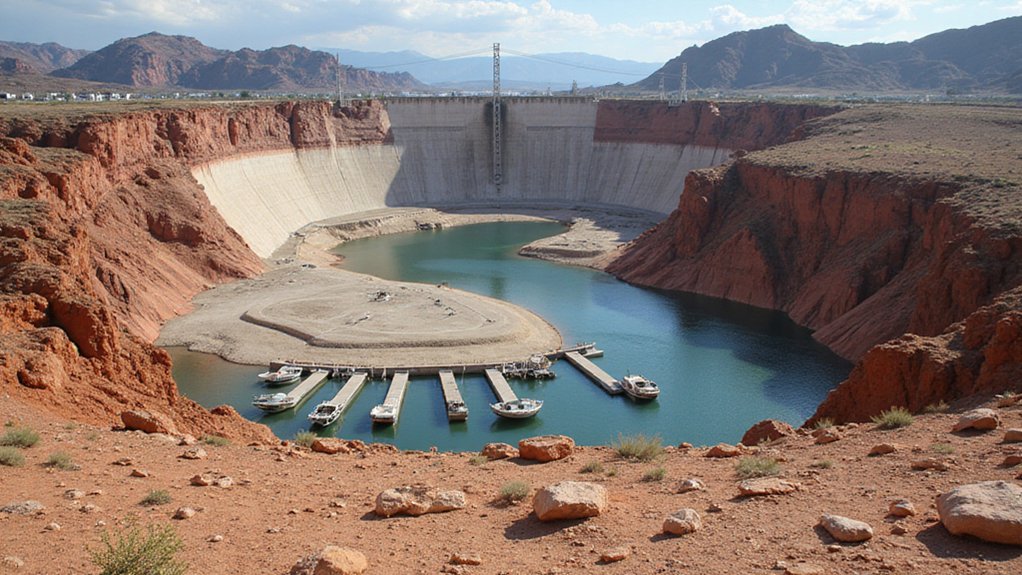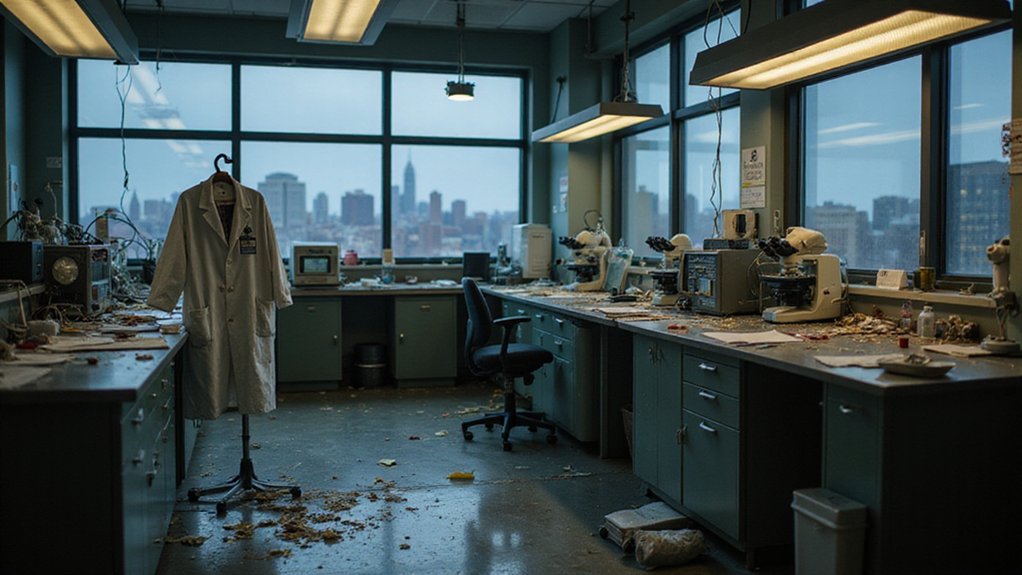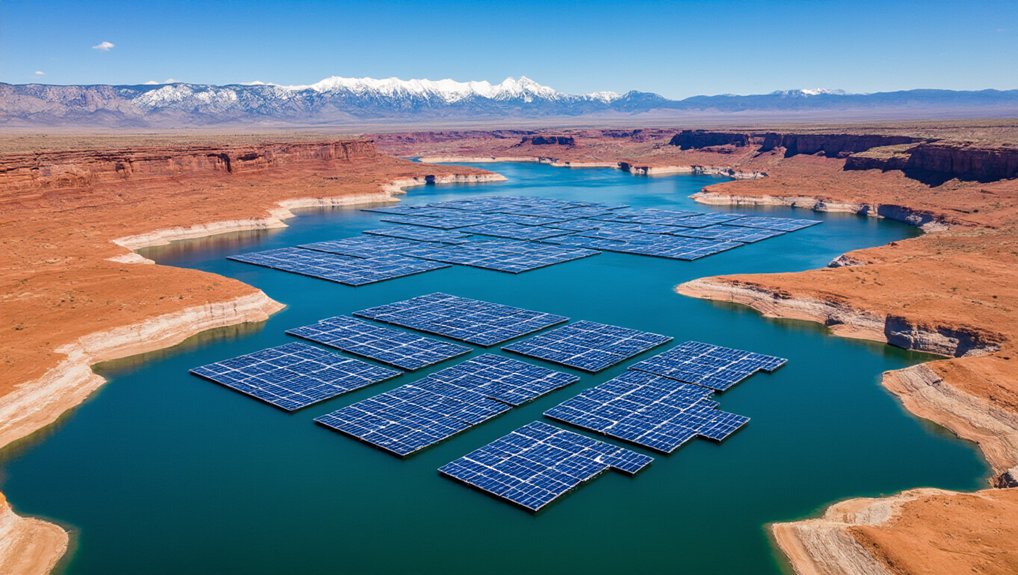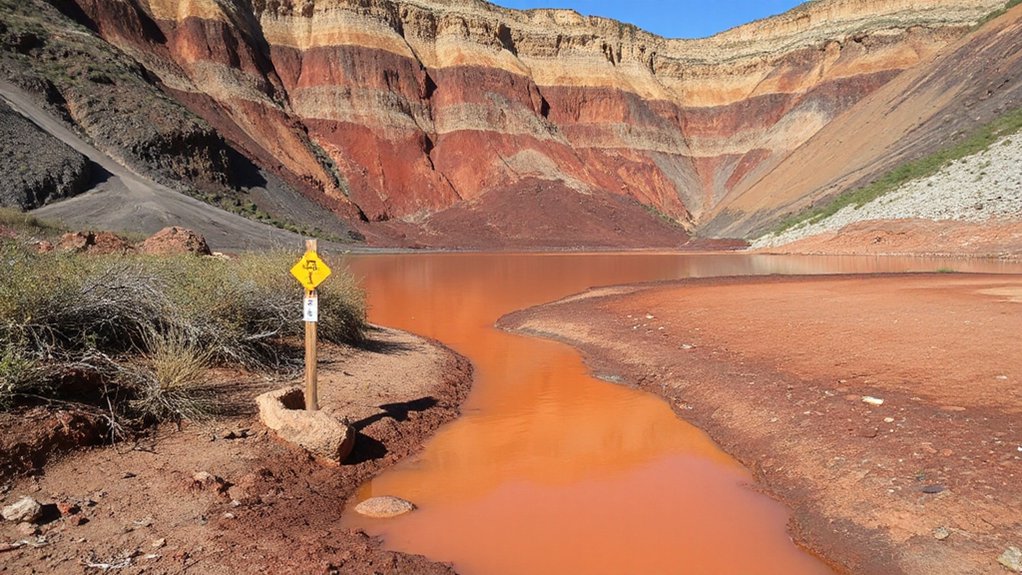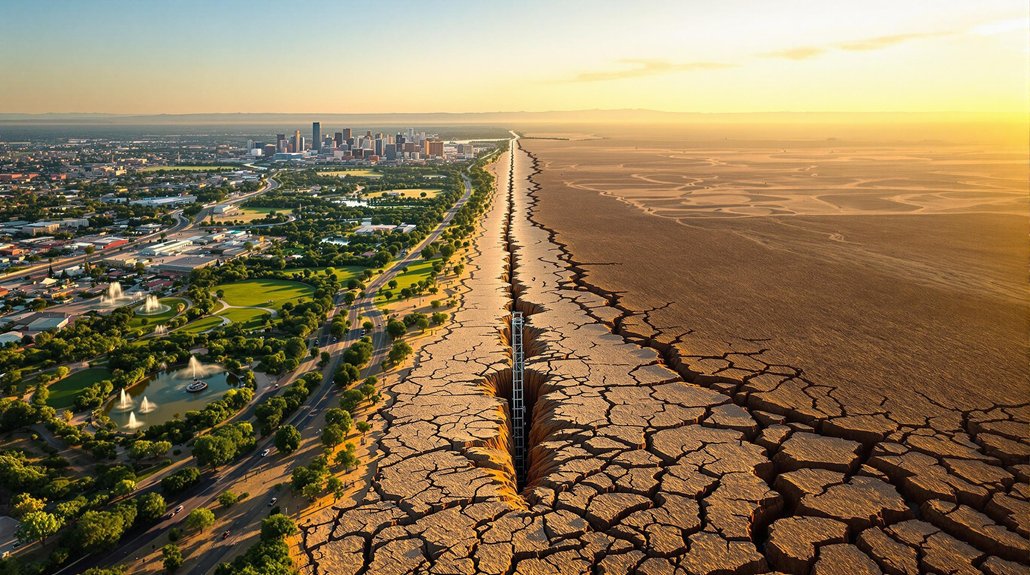Where will the Southwest find its water and power if Lake Powell keeps shrinking? As of mid-July 2025, the massive reservoir stands at a troubling 3,558.59 feet—that’s 141 feet below what engineers call “full pool.” Translation: the lake is barely hanging onto 31.61% of its capacity. A mere 7.68 million acre-feet remain in what was once America’s second-largest reservoir.
The numbers paint a grim picture. Water year 2025 has seen the lake lose over 1.45 million acre-feet of precious storage. Outflows exceed inflows by an alarming 1.4 million acre-feet. Mother Nature isn’t exactly helping either. Despite a freakishly high snowpack (279% of average), actual precipitation landed at just 81% of normal. Funny how that works—tons of snow doesn’t automatically mean tons of water. The situation reflects how climate feedback loops are intensifying drought conditions beyond what natural cycles alone would produce.
For millions of Southwestern residents, the real nightmare scenario looms at elevation 3,490 feet. That’s when the dam’s turbines stop spinning. No water, no power. Simple as that. Federal forecasters are already warning that Powell could dip below the critical 3,525-foot threshold by early 2026, triggering emergency drought actions. Some pessimists say January.
The implications stretch far beyond pretty houseboats having nowhere to dock. Lake Powell feeds water to Lake Mead, Lower Basin states, and Mexico. Together, these two reservoirs represent 92% of the Colorado River Basin‘s storage capacity. When they suffer, everyone from farmers in Arizona to families in Las Vegas feels the pain. The continued drop has made four launch sites completely unusable for boaters, forcing visitors to use only main marina access points. Ecological studies show that these dropping levels are creating larger oxygen-depleted zones in the lake, further stressing already vulnerable aquatic ecosystems.
Officials operate under something called the “Mid-Elevation Release Tier,” planning to send 7.48 million acre-feet downstream. But continuing this pace while inflows remain at just 50% of average? You don’t need an engineering degree to see where this is headed.
The Bureau of Reclamation keeps releasing updates and projections. States keep negotiating. Meanwhile, the water keeps dropping. Clock’s ticking on this one, folks.
References
- https://lakepowell.water-data.com/LP_WaterDB_printable.php
- https://www.usbr.gov/lc/region/g4000/24mo.pdf
- https://coloradosun.com/2025/07/17/lake-powell-colorado-hydropower-water-levels/
- https://www.usbr.gov/uc/water/crsp/studies/images/PowellElevations.pdf
- https://lakepowell.water-data.com/index2024_2.php?as_of=2025-05-01
